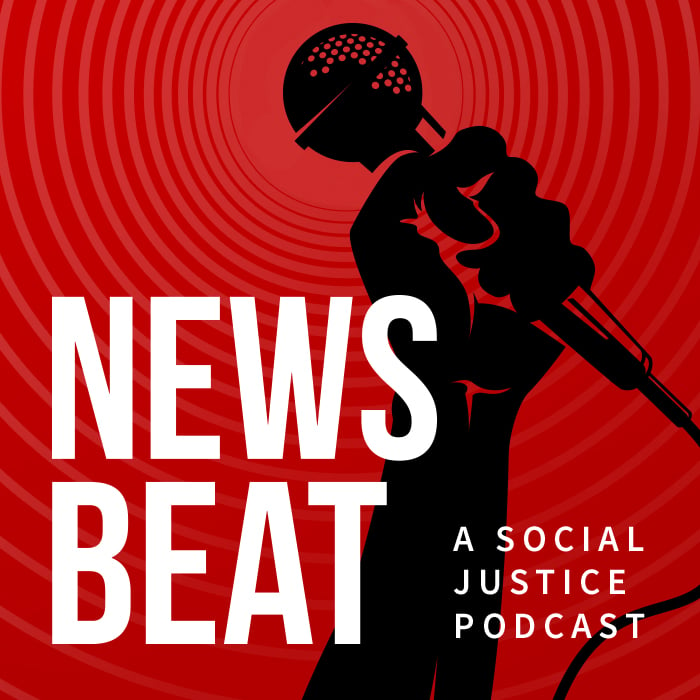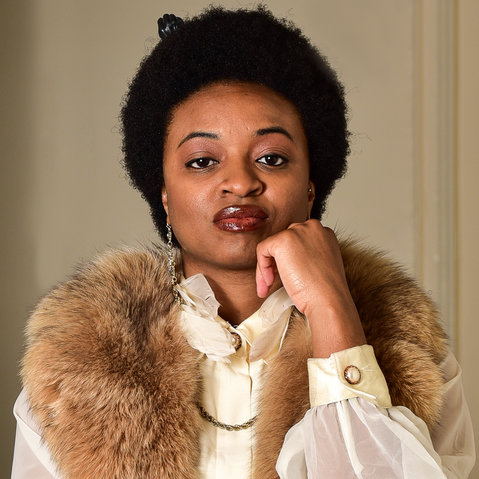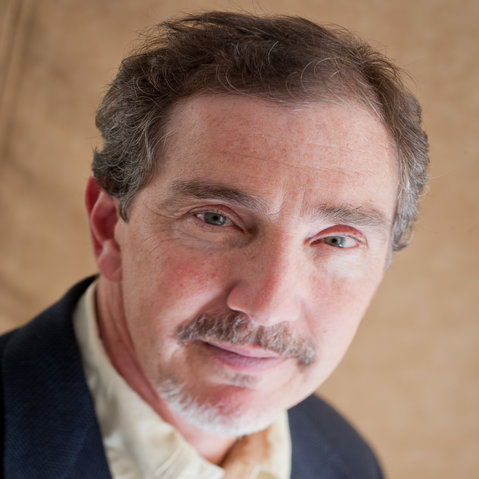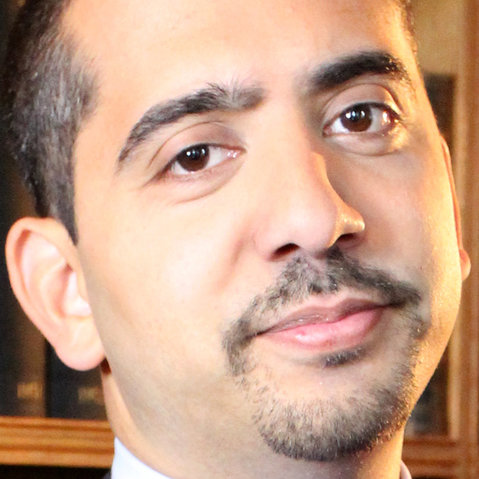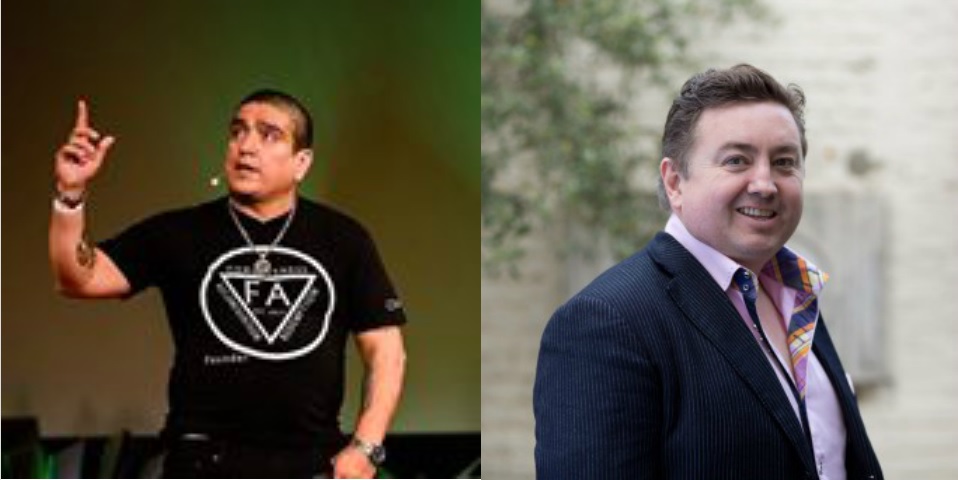The alleged bomber was identified as Michael Christopher Estes. In an interview with federal officials, Estes allegedly made clear his motivations for planting the homemade bomb inside Asheville Regional Airport: He was preparing to “fight a war on U.S. soil.”
Luckily, no one was harmed inside Asheville. The “war” Estes was allegedly getting ready to fight never materialized.
Typically with any terror attack on U.S. soil, there’s wall-to-wall coverage on network broadcasts. These reports invariably detail the devastation that unfolded and the heroics of first responders, followed by insidious speculation over how the attacker’s religious beliefs or political views served as a motivating factor. Alas, this scripted narrative seemingly always unfolds when the purported attacker is identified as a Muslim.
In the haze of a sudden attack, we’ve also seen a desire by journalists to advance these talking points, despite the absence of factual reporting. On many occasions, this occurs when the media is quick to presume Muslim violence—the most glaring example being the Boston Marathon bombing in 2013.
For whatever reason, the foiled plot to bomb an American airport did not generate the same standard deluge of press coverage. Actually, it’s quite possible that most Americans are unaware that this bust—and its potentially catastrophic and lethal devastation—even happened, or was a possibility at all. It’s surmisable that coverage of this incident would’ve likely been far more extensive if the attack was successful. It’s also completely surmisable, given the aforementioned track record, that the national media would no doubt have devoted more resources to investigate the person’s background et al., had the attacker been Muslim.
Since the Sept. 11, 2001 attacks, conventional wisdom holds that Muslim extremists pose the biggest threat to national security. Trillions have been spent in securing American interests abroad and at home and waging the so-called War on Terror. Secret surveillance has become an ubiquitous law enforcement tool, and innocent Muslim Americans have been spied upon by the NYPD at mosques, at work, and other establishments. Multiple Congressional committees have held hearings on the threat of Islamic extremism, including a series of sessions before the House Homeland Security Committee that began in March 2011 under the leadership of then-Chairman Rep. Peter King (R-NY).
King’s politically-charged hearings coincided with an emotional debate over a proposal to build a mosque and community center in Lower Manhattan.
Even at that point—a decade after 9/11—Muslim Americans expressed that Islamophobia was even worse than in the early months after the attack. Anti-Islam rhetoric has persisted, but it reached a fever pitch during the 2016 presidential campaign, when then-candidate Donald Trump said he believes “Islam hates us” and called for a ban on all Muslims entering the country in response to the deadly 2015 San Bernardino shooting, which left 14 people dead.
After Trump was elected, he signed multiple executive orders banning travelers from Muslim-majority nations from coming to the United States, near-instantaneously sparking massive protests at airports across the country. In actuality, there was already a costly and ineffective post-9/11 travel registry system that collected the information of tens of thousands from 24 predominantly Muslim countries, plus North Korea, but it failed to even uncover one terror plot, and was discontinued in 2011 by the Obama administration.
In an era defined by the need to respond vigorously to extremist attacks at home and abroad, officials sought to combat the spread of dangerous ideology with a program called Countering Violent Extremism (CVE). Created by the Obama administration, CVE sought to better understand both Islamic and right-wing extremism, and develop ways to prevent people from being radicalized. Although some Muslim Americans embraced the program because the government appeared to welcome feedback from prominent members of the community, others saw it as furthering the stereotype that Muslims are inherently at risk of radicalization.
Among CVE’s most significant shortcomings, critics say, is its emphasis on deputizing members of local communities to single out possible bad actors. This type of suspicion facing Muslim American communities became so widespread that Muslim advocacy groups wondered why right-wing terror wasn’t receiving equal scrutiny.
The actual number of attacks perpetrated by so-called Islamic extremists and right-wing extremists suggests a disproportionate amount of funds and attention is directed at the former, when right-wing zealots have carried out even more attacks in the United States since 9/11, killing roughly the same amount of people, according to the government’s own figures.
From Sept. 12, 2001 through Dec. 31, 2016, right-wing extremists carried out 62 violent attacks, killing 106. At the same time, the 23 incidents attributed to Islamic extremists led to 119 deaths, according to the non-partisan United States Government Accountability Office. Up until the summer of 2015, deaths caused by non-Muslims in extremist attacks dwarfed those in which Muslims were fingered as the perpetrators, 48 to 26.
According to data compiled by The Investigative Fund at The Nation Institute and Reveal from The Center for Investigative Reporting, there was a combined total of 115 successful and foiled right-wing plots between 2008 and 2016, one-third of which were thwarted. During that period, there were 63 cases of Islamic domestic terror.
It’s no wonder then that Muslim Americans often cringe when there’s word of another mass shooting or terror attack in America. On the occasions when the violent offender is a white male, what Muslims notice is an attempt by some in the media to either humanize the attacker or question their mental stability, said Mehdi Hasan, a host on Al Jazeera English and contributor to The Intercept.
“It’s become a joke in the Muslim community. It’s become a meme online when a white, far-right terrorist [attack] happens we all joke: ‘When is he going to be humanized? When’s he going to be given a ‘mentally ill’ excuse?’” Hasan tells News Beat podcast.
“Clearly that is what you might call white privilege,” he adds. “The idea that if a white person carries out an act of mass terror it must immediately be excused, indulged, explained. He must be humanized. There must be a mental illness problem, and therefore terrorism becomes a redundant word. Terrorism becomes not an act of violence committed for political purposes against civilians, which is one definition of terrorism, it becomes really an act of violence carried out by a brown Muslim dude.”
EXTREMIST NEXT DOOR
Charles Kurzman, professor of sociology at the University of North Carolina at Chapel Hill and co-director of the Carolina Center for the Study of the Middle East and Muslim Civilizations, publishes an annual report at the Triangle Center on Terrorism and Homeland Security of Islamic extremist attacks in the United States. What he often finds is the number of deaths associated with extremism are always far eclipsed by the overall murder rate in the country.
Kurzman’s most recent report analyzing murder data from 2016 found that Islamic extremism-inspired attacks represented one-third of one percent of all murders in America that year. Yet the prevailing collective wisdom for years now in America has been that terror, specifically so-called “Islamic extremism,” poses the most serious threat to public safety.
In his most recent report, Kurzman’s colleague at the Triangle Center on Terrorism and Homeland Security, David Schanzer, called it “flatly untrue that America is deeply threatened by violent extremism by Muslim-Americans.”
Kurzman chalks up the fervor over Islamic extremism to fear rhetoric and concerns that there’d be “waves of 9/11s coming our way,” after the initial attack in 2001.
Although that hasn’t been the case, Kurzman notes that the government hasn’t “recalibrated our sense of threat.”
“The Islamic State, for example, did pose a threat for a time. Fortunately, that threat is much diminished now,” Kurzman explains. “But even at its peak we were talking about lone individuals, or a couple of individuals, with very low-tech types of attacks, such as knives, personal arsenal, driving on sidewalks to run people over. These are not the scale of attacks that we feared might occur after 9/11 that would replicate the scale of the attacks on that horrible day. We just haven’t seen that level of sophistication and coordination, and yet the institutions we set up to protect ourselves from that large-scale type of attack are still there today.”
When Kurzman and Schanzer published a survey of perceived threats from law enforcement agencies nationwide, they found that the national narrative over Islamic extremism was out of touch with the most serious concerns of local agencies.
“In a survey we conducted with the Police Executive Research Forum last year (2014) of 382 law enforcement agencies, 74 percent reported anti-government extremism as one of the top three terrorist threats in their jurisdiction; 39 percent listed extremism connected with Al Qaeda or like-minded terrorist organizations,” Kurzman and Schanzer wrote in The New York Times. “And only 3 percent identified the threat from Muslim extremists as severe, compared with 7 percent for anti-government and other forms of extremism.”
“These officers, selected from urban and rural areas around the country, said that radicalization from the Middle East was a concern, but not as dangerous as radicalization among right-wing extremists,” they added.
Kurzman and Schanzer weren’t alone in that conclusion.
A separate study conducted by National Consortium for the Study of Terrorism and Responses to Terrorism at the University of Maryland in 2014 similarly found that four of the five most serious perceived threats by law enforcement came from right-wing groups. Leading the way was the Sovereign Citizen movement, followed by Islamic extremist and a trio of far-right groups.
The most notable right-wing attacks in recent memory—the mass murder of nine African Americans at Mother Emanuel A.M.E. Church in Charleston, S.C. by white supremacist Dylann Roof in 2015, and the slaying of 32-year-old Heather Heyer as she protested a neo-Nazi march in Charlottesville, Va. this year—are outliers in that they both generated an overwhelming sense of horror.
Charlottesville, in particular, forced many Americans to look inward at the dangers of right-wing terror.
The chilling scene of mostly white men hoisting tiki torches and chanting “You will not replace us” as they marched on the streets of a Virginia college town was evidence enough of insidious anti-semitism and racism that exists in America today. Then one of the protesters decided to crash a car into a group of counter-protesters, killing Heyer.
While President Donald Trump insisted that both sides were to blame for violence that broke out that day, other government officials decided to take action. In late September, federal law enforcement officials appeared before the Senate Homeland Security and Governmental Affairs Committee, and were asked about the right-wing threat facing Americans.
“I don’t think many Americans understand the level of threat that we have in this country from white supremacists, anti-government and other violent extremists,” said Sen. Claire McCaskill (D-Missouri).
She proceeded to discuss the number of people killed by right-wing extremists since 9/11, citing the Government Accountability Office’s findings. The same report, which was released before the Charlottesville attack, also found that deaths in right-wing extremist incidents “exceeded those caused by radical Islamist violent extremists in 10 of the 15 years” after 2001. (The GAO generally defines violent extremism as “supporting or committing violent acts to achieve political, ideological, religious, or social goals.”)
“We’ve had multiple hearings on the threat of ISIS as it relates to homeland security,” McCaskill added. “We’ve had zero hearings about the threat of domestic terrorists and the threat they pose in our country and our response to it.”
McCaskill asked FBI Director Christopher Wray for a breakdown of his agents investigating international terror versus terror coming from white supremacists and anti-government groups.
Wray testified that he “agreed” that the domestic terror threat is “a very very serious one, indeed, and something we spend a lot of time focused on” but he couldn’t provide an allocation of agents.
In his own research, Kurzman came across an FBI report from about a decade ago that listed approximately 7,000 agents assigned to counterterrorism duties, with only 335 of those dedicated to domestic terror. Despite the limited roster of those investigating home-grown terror, those hundreds of agents were making “far more arrests per agent than the 95-percent who were devoted to foreign, international terrorism, the bulk of which is directed at Muslim extremists,” explained Kurzman.
Of Wray’s response to McCaskill, Kurzman said: “I can’t wait to hear what that number is. And I hope that that number reflects the actual rate of domestic terrorism in this country.”
COMBATING HATE
Sammy Rangel is not shy about discussing his troubled past. The former right-wing extremist now finds himself on the side of those trying to do good, by offering guidance to others consumed by hate. Having lived that life, Rangel is not one to judge.
“I think what drives us is our sense of duty, our sense of service to kind of unravel some of the hate that we’ve created in this world,” Rangel tells News Beat podcast. “But also we feel like today we bring something to the table that is meaningful so we can leverage that experience when necessary but we also know that is not the only defining factor of who we are and what we’re doing.”
Rangel is the co-founder of Life After Hate, a nonprofit striving to help rehabilitate people who lived a life of extremism. As long as there is empathy and compassion in the world, he doesn’t believe anyone is beyond salvation.
He’s come a long way. Rangel spoke with News Beat at the nonprofit Women’s Islamic Initiative in Spirituality and Equality WISE Up Summit in Washington, D.C., which marked the culmination of years of research and the publication of an extensive report challenging misconceptions about Islam and how extremists use a perverted interpretation of the religion to corrupt the minds of impressionable and sometimes disenfranchised youth. [Listen to a special BackBeat episode recorded at the WISE Up Summit HERE]
Rangel shared some of his insights about his group’s mission as a panelist onstage. On the sidelines, he talked about how Life After Hate turned what could’ve been a horrific incident in Buffalo, NY into a moment of reflection and spiritual awakening.
“There was a gentleman contemplating a violent act of extremism against a mosque that he lived in and somehow he found out about our organization…he agreed to meet with us and part of our intervention was seeing if he and the community he was thinking about victimizing were open to meeting together,” shared Rangel. “Both parties came together and were able to reconcile. By the end of that intervention, that man who was a member of the far-right…ended up praying with the imam. And he is now embedded there. He has not converted to any sort of religion, but he’s embedded himself as a community member who goes to that mosque routinely now.”
Despite its success in encouraging former members of the far right to break away from a hate-filled cycle, Life After Hate lost all of its government funding once the Trump administration took office. When the government announced its grant rewards in June under the auspices of Countering Violent Extremism, Life After Hate was completely cut off.
While the government’s motivations for deciding not to reward funds to the organization is unclear, there have been reports that the Trump administration has considered discontinuing CVE programs dedicated to combating right-wing extremism.
While such a move has not been made official, nor the complete gutting of funds for a nonprofit such as Life After Hate, Trump’s anti-Islamic rhetoric and his condemnation of “both sides” after Charlottesville plays into the narrative that the administration is not all too concerned with the growing threat of extremism on the right.
At the same time the president is quick to go on the offensive in response to purported ISIS-inspired attacks, he appears more mild-mannered when confronted with a mass shooting perpetrated by a white man, and has said it’s inappropriate to discuss gun legislation in the immediate aftermath of a shooting rampage.
In the past week, he retweeted an Islamophobic video shared by a fringe far-right party in Britain, prompting condemnations from many in Parliament and Muslim advocacy groups in the United States.
“When I was in prison for a number of years, the number one write-up, the number one charge I was always being accused of was ‘inciting a riot.’ So there’s that word ‘inciting,’ right. And I think that we have a national narrative that is inciting and emboldening the types of activities that people are becoming—the wake-up call, right,” said Rangel. “There are people who I think because how neatly packaged some of this narrative has been, has become palatable for people who might otherwise cringe and say ‘I’m not willing to go that far but I’m willing to go this far.’”
“But him crossing that line and stepping all over political correctness, stepping over civil rights advancements, at this point, I think, is kind of speaking and giving a voice to people who have since felt that their voices aren’t as powerful as they used to be and aren’t quite sure how to share,” he continued. “And so their grievances need to be heard through dialogue, our grievances need to be heard through dialogue, but I don’t think we have a national voice that is encouraging dialogue. I think it’s encouraging sides.”
Rangel’s fellow co-founder Anthony McAleer considers the alt-right rally in Charlottesville a “wake-up call,” too.
“I think it’s what has always been there became very visible… I think there’s many factors to that,” he told News Beat at the WISE Summit. “Something that we heard during the election is ‘He said what I think, but I’m too afraid to say it.’ And I think we have to have dialogue and I don’t think a huge portion of the population should feel that they’re too afraid to say what they’re thinking. I think when there is no dialogue then that stuff gets withheld, it’s sort of suppressed, and when it gets a chance to release itself, it pukes itself out, it doesn’t come out nicely… And I think the key thing is to have dialogue and to listen to each other and not dehumanize each other. I think what’s tragically happening in this country is on the left and the right, everybody is dehumanizing everybody… As long as we’re dehumanizing anybody for any reason in this country, we can never have peace.”
“In the absence of that dialogue, the simple solutions offered by demagogues become the only solution,” added McAleer. “If that’s all that’s being offered to them, that’s the only way that they feel they’re being heard, they’ll go that way…they’ll latch onto that.”
In this year alone, the United States has seen an attack on a Portland commuter train in which a man killed two Good Samaritans coming to the aid of a hijab-wearing woman; the aforementioned terror attack in Charlottesville; and the killing of an African American by a military veteran who took a 200-mile bus trip out of a desire to allegedly target black males.
The word “terrorism” is defined ambiguously in the media and within government agencies, which is why there’s often criticism directed at law enforcement when a terror charge is not attached to white men who carry out seemingly political or social acts of violence. Dylann Roof, the now-23-year-old who carried out the lethal attack in that historic black church in Charleston, for example, was not charged with terror, despite voicing anti-black rhetoric during his massacre.
Of course, there’s also no denying that extremist attacks perpetrated by Muslim men are a threat. Before the attack in Vegas in October, the largest shooting by a single gunman in modern American history was carried out by a Muslim man named Omar Mateen.
“Terrorism has been around for two centuries, three centuries, it didn’t start in the Muslim world,” explained Hasan, the journalist and author. “Clearly it’s a problem now in the Muslim-majority world. No one is denying there’s some pretty vicious violent groups out there. From Syria, to Pakistan to Indonesia, Muslim majority countries are grappling with really big problems. But what I would say is to reduce terrorism just to a Muslim phenomenon, is not just ahistorical, but it is actually offensive, because what you’re doing is you’re demonizing one particular community, saying this is a problem of yours, rather than recognizing it is a global problem.”
“Unless you’re willing to be consistent, unless you’re willing to be have a single standard rather than a double standard, you’re not going to be able to beat terrorism, you’re not going to inspire people to get together, you’re not going to be seen as credible or equitable,” he added. “And that’s a problem for anyone who wants to safeguard our society.”
